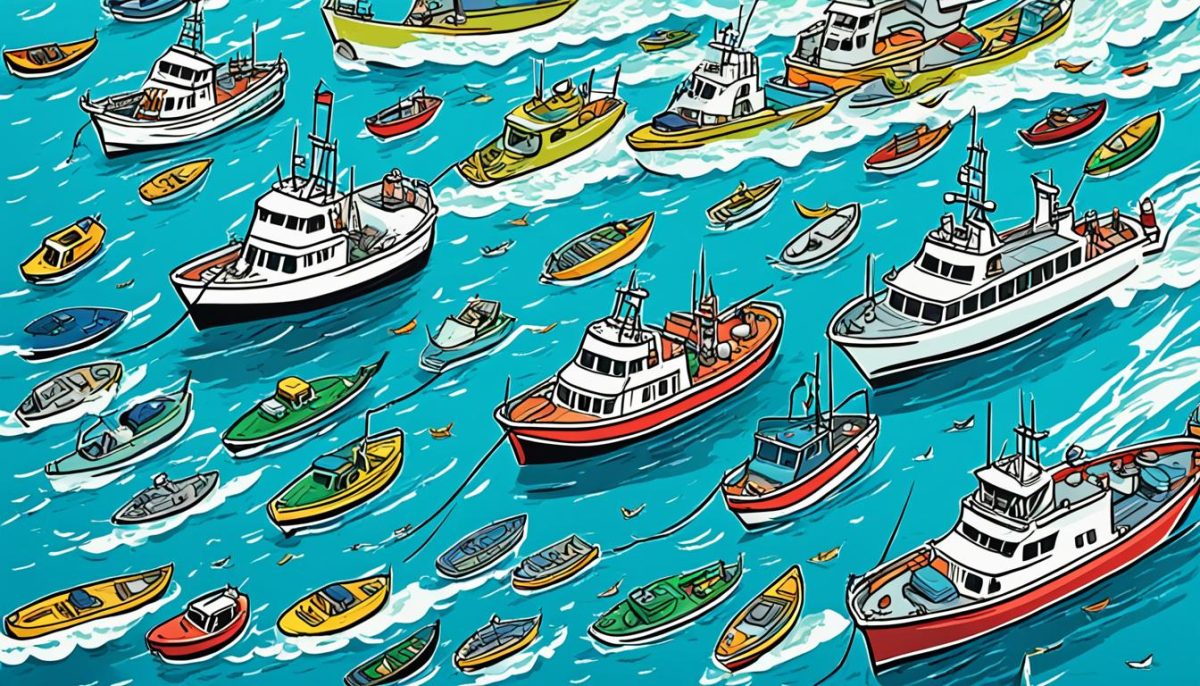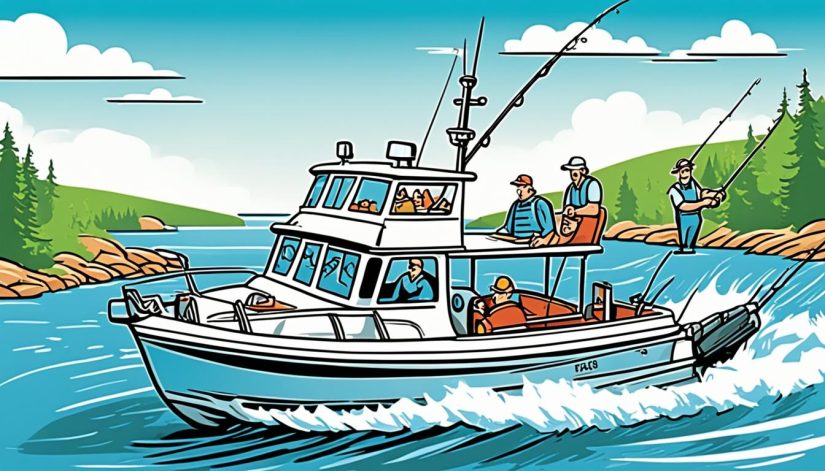As responsible boaters, we must prioritize safety and respect the operations of fishing vessels to ensure a harmonious experience for everyone on the water. When navigating the waters, it’s essential to understand the proper etiquette for passing a fishing boat. In this article, we’ll guide you through the essential steps to safely and courteously pass a fishing boat.
Maintaining a safe distance and identifying fishing boats on the water are crucial aspects of navigating around them. We’ll also explore the maneuvering limitations of fishing boats, so you can make informed decisions and pass them in a way that minimizes disruption to their operations. By following these guidelines, you can demonstrate your commitment to boating etiquette and contribute to a safer, more enjoyable experience for all.
Maintaining a Safe Distance from Fishing Vessels
When navigating near fishing boats, maintaining a safe distance is crucial for the safety of all parties involved. Fishing vessels often have limited maneuverability, as they may be actively engaged in casting nets, lines, or other equipment. Understanding how to properly identify these boats and the unique challenges they face can help us ensure a smooth and safe passage.
Identifying Fishing Boats on the Water
Recognizing fishing vessels on the water can be a valuable skill for boaters. Some key features to look for include:
- Presence of fishing gear, such as nets, lines, or poles extended from the vessel
- Slower speeds and erratic maneuvering compared to other boats
- Distinctive shapes and silhouettes that differ from recreational or commercial vessels
By being able to quickly identify fishing boats, we can better anticipate their movements and adjust our own course accordingly.
Understanding the Maneuvering Limitations of Fishing Boats
Fishing boats often have limited maneuverability due to the nature of their operations. Factors such as the size and weight of their equipment, as well as the need to maintain specific positions for effective fishing, can significantly impact their ability to rapidly change direction or speed. When passing a fishing vessel, it’s important to be aware of these navigational considerations and give the boat a wide berth to avoid any potential collisions or disruptions to their work.

“Maintaining a safe distance from fishing boats is not only a matter of courtesy, but also a crucial safety measure for all parties involved.”
How Should You Pass A Fishing Boat
When it’s time to pass a fishing boat, it’s crucial to do so in a way that ensures the safety of everyone involved. We’ll guide you through the proper techniques for passing a fishing vessel, including how to communicate with the boat’s crew, adjust your speed and course, and maintain a safe distance throughout the maneuver.
Communicate with the Fishing Boat’s Crew
The first step in safely passing a fishing boat is to establish communication with the crew. As you approach the vessel, make visual contact with the crew and, if possible, communicate your intentions via radio or hand signals. This helps the fishing boat’s operators be aware of your presence and plan accordingly.
Adjust Your Speed and Course
Once you’ve established communication, it’s time to adjust your speed and course to ensure a smooth and safe passing. Slow down to a speed that allows you to maintain control of your vessel, and adjust your course to provide a wide berth around the fishing boat. Avoid cutting too close or creating a wake that could disturb the fishing operations.
Maintain a Safe Distance
Throughout the passing maneuver, it’s essential to maintain a safe distance from the fishing boat. A good rule of thumb is to maintain at least 100 yards of clearance on both sides of the vessel. This gives the fishing boat’s crew ample room to maneuver and ensures that your wake doesn’t interfere with their operations.
By following these steps, you can ensure a safe and courteous passing of a fishing boat, upholding the boating etiquette that helps keep our waterways safe and accessible for all. Remember, the proper way to pass a fishing boat is to communicate, adjust your speed and course, and maintain a safe distance – a small effort that can make a big difference in the lives of those working on the water.

“Respect for the fishing vessel and its crew is paramount when passing on the water. By following the proper techniques, we can all enjoy a safe and harmonious coexistence on the open waters.”
Respecting Fishing Operations and Local Regulations
As responsible boaters, we must not only navigate safely around fishing vessels but also respect the ongoing fishing operations and adhere to any local regulations that may apply. Fishing boats often have specific rights-of-way and may be engaged in activities that require extra caution and consideration from passing boaters.
By understanding the importance of respecting fishing operations, we can ensure a harmonious and safe experience for everyone on the water. This means being mindful of the fishermen’s work, avoiding interference with their activities, and following any guidelines or rules set forth by local authorities. Respecting the rights-of-way for fishing boats and being attentive to their maneuvering limitations are essential for maintaining a cooperative and accident-free environment.
Furthermore, adhering to local boating regulations is crucial when navigating near fishing vessels. These regulations may vary by location and are designed to promote safety and protect the interests of both recreational and commercial watercraft. As responsible boaters, we must familiarize ourselves with the applicable rules and regulations in the areas we frequent, ensuring we are in compliance and contributing to the overall well-being of the waterways.

